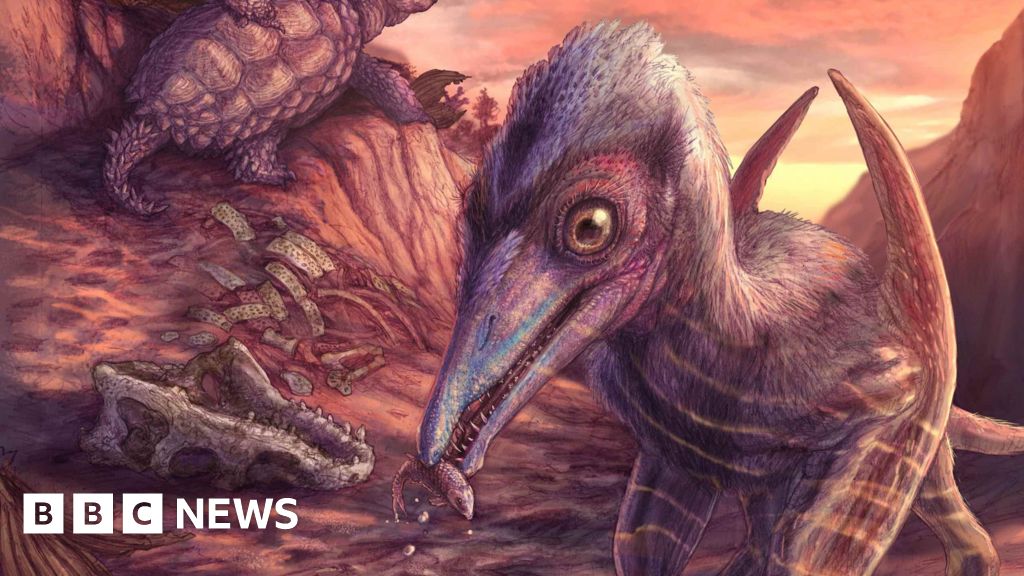200 million year-old jawbone revealed as new species - BBC
4 days ago

The recent discovery of a new pterosaur species, named Eotephradactylus mcintireae, has captivated the scientific community and paleontology enthusiasts alike. This remarkable find expands our understanding of these ancient flying reptiles, which roamed the Earth during the Late Cretaceous period, approximately 95 million years ago. The name Eotephradactylus mcintireae translates to "ash-winged dawn goddess," a nod to its unique features and the era it represents. The fossil remains were unearthed in North America, specifically in the region that we now recognize as part of the rich fossil beds of the Western Interior Seaway, which once divided the continent into two landmasses. This discovery not only adds to the diversity of known pterosaur species but also provides insights into the ecological dynamics of prehistoric environments. Pterosaurs are often mistaken for dinosaurs, yet they belong to a separate group of reptiles known as archosaurs. These fascinating creatures were characterized by their membranous wings, elongated necks, and diverse sizes ranging from small bird-like forms to giants with wingspans exceeding 30 feet. Eotephradactylus mcintireae appears to have occupied a niche that combined both agility and adaptability, suggesting that it may have been a proficient hunter in the skies of its time. Researchers believe that its unique wing structure, indicated by the fossilized remains, could have allowed for advanced aerial maneuverability, giving it an advantage over other contemporary species. This highlights the evolutionary innovations that pterosaurs underwent, allowing them to thrive in a variety of ecological contexts. The discovery of Eotephradactylus mcintireae also raises intriguing questions about the environmental conditions of the Late Cretaceous period. During this time, the Western Interior Seaway provided a rich and diverse habitat, teeming with marine and terrestrial life. The presence of various pterosaur species suggests that these flying reptiles played a crucial role in the food web, likely feeding on fish and other small animals that inhabited the waterways. Furthermore, the fossil evidence indicates that Eotephradactylus mcintireae may have coexisted with other notable prehistoric creatures, allowing scientists to better understand the interactions among species and the evolutionary pressures that shaped their adaptations. As paleontologists continue to study Eotephradactylus mcintireae and its implications for our understanding of pterosaur evolution, this discovery underscores the importance of fossil research in unraveling the mysteries of our planet's history. Each new species adds a piece to the complex puzzle of life on Earth and enhances our knowledge of prehistoric ecosystems. The ongoing exploration of fossil sites will undoubtedly lead to further revelations, offering glimpses into the lives of these extraordinary creatures that once soared through the skies. The excitement surrounding Eotephradactylus mcintireae serves as a reminder of how much there still is to learn about the past and the remarkable diversity of life that has existed on our planet.